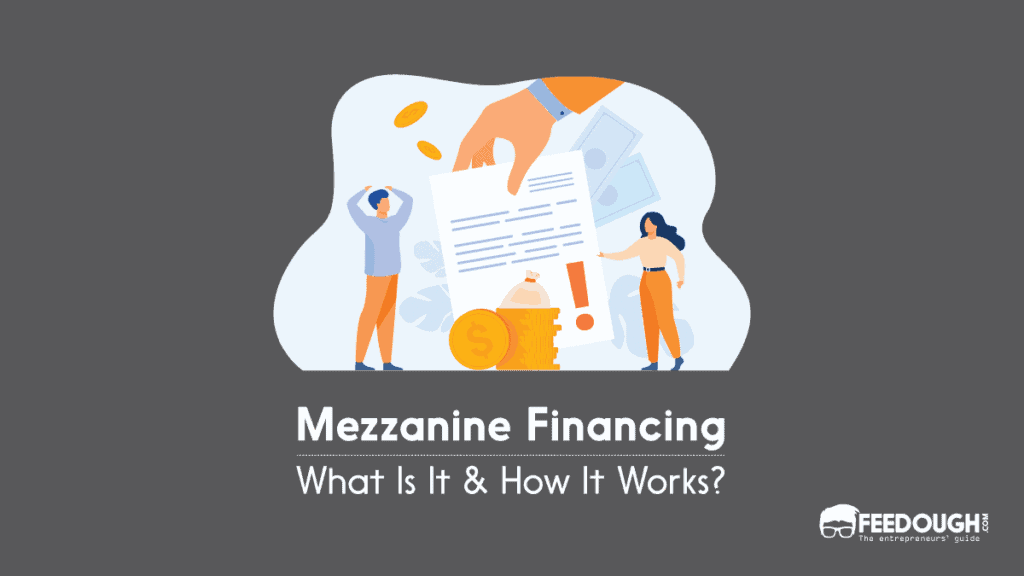Sometimes, profits are not enough for a business to meet their expansion and growth goals. And to cover for that, they have to take external funds that comes with a hefty price – either they have to dilute their equity (equity financing) or they end up taking loans that needs to be repaid along with interest (debt financing). Usually, it is a tough choice for business owners to choose between these two types of startup funding. This is when a third option comes into picture with the name of mezzanine financing.
Mezzanine financing is an investment vehicle that allows the company to create a mixture of both debt and equity when they are unable to arrange long term debt financing. It is gaining popularity over the years especially among established startups and promising companies.
Financial institutions offering debts generally charge very high interest rates or terms that don’t not every company can comply with. With mezzanine financing, companies can easily fund their future projects even when they have only limited resources.
What Is Mezzanine Financing?
Mezzanine financing is a hybrid form of debt and equity financing which gives the lender a warrant to convert the securities into equity in case of any default. Usually, this right can be exercised after venture capitalists and other senior debts have been paid.
Due to the absence of collateral requirements, mezzanine funding is comparatively easy to arrange. It can be termed as either cheaper equity or expensive debt. But, the absence of collateral involves a high risk on part of the borrower. They will have to give up a part of ownership in case of default.
Suppose Jack owns a grocery store. He wishes to expand his business and through mezzanine financing, he manages to avail of a loan of $10,000 while giving warrants to the lenders. Due to some circumstances, Jack fails to repay the loan in the fixed tenure. Subsequently, the lenders take up the agreed-upon ownership share in his shop and sell it off to recover the money.
How Does Mezzanine Financing Work?
Mezzanine financing is often referred to as the highest risk form of debt. But this high risk on the part of the borrowers offers the highest rewards to the lenders. The founders look for an investor willing to provide funds in the form of subordinated debts with a fixed rate of interest. These debts have pre-notioned warrants that allow the investor to convert the debt into equity in the future. Usually, the value of loans ranges between $500,00 to $5 million over a tenure of 5-7 years.
These lenders look for rates of returns ranging from 12-20%, sometimes even 30%. It does not involve a very high dilution of control in terms of equity stake as compared to raising capital through additional equity.
Quite appropriately, any mezzanine lender will be reluctant to grant funds unless the company has a high potential for growth in the future, a reputation in the industry, continuous cash flow, and stability in earnings. Hence, mezzanine funding cannot be used for new startup funding. Sources of mezzanine financing mainly include private investors, insurance companies, mutual funds, pension funds, and banks.
Sources Of Mezzanine Financing
Funds can be arranged from different sources. These are –
- Private Investors: These investors generally involve friends, family, and other knowns who trust the entrepreneur and are assured of the firm’s credibility.
- Insurance Companies: Mezzanine is preferred among insurance companies globally investing in private debt. Some examples are Prudential Financial, AXA Winterthur, and Fubon Life.
- Mutual Funds: It involves forming a pool of money gathered from numerous investors to invest in other securities like stocks, bonds, debt, financing, etc.
- Banks And Financial Institutions: banks provide both short-term and long-term to businesses. But mezzanine loans are unsecured and demand a much higher reward.
Uses Of Mezzanine Financing
Some major transactions leveraged by mezzanine financing are:
Recapitalisations
When a company wishes to bring changes to its debt-equity structure, it has to raise new capital. Mezzanine financing helps them in keeping control of equity while at the same time giving them partial liquidity.
Growth Capital
Companies having future goals of expansion and growth in the industry have to incur severe capital expenditure. They have to launch new products and services, and fresh capital is required to ensure sufficient liquidity.
Acquisitions
Companies often purchase or acquire other existing businesses in their industry to expand their customer base and grow quickly. The fund requirement materialises according to the purchase value of the business being acquired.
Refinancings
Using mezzanine financing adds flexibility to the company’s debt-equity structure and helps pay off or replace existing debt on better terms and interest rates.
Mezzanine financing is also availed by family businesses who want to repurchase their shares initially given up, to increase ownership stake.
Advantages Of Mezzanine Financing
- Flexibility: More flexibility than traditional sources of debts like bank loans and easy to procure.
- Cheap And Less Dilutive: Much cheaper than equity raising for a company and does not cause dilution in equity holdings of existing shareholders. It is tax-deductible at source hence increasingly preferred by borrowers.
- Higher Rate Of Return: The mezzanine lender is entitled to consistent returns on investments that are higher than typical debt.
- Long Term: The lenders are in for long-term investments instead of those looking for quick returns on their money. This offers a sense of stability and security to borrowers in terms of funds.
- Strategic Advice: The lenders granting funds are well versed with market conditions and bring valuable inputs to the table in the form of advice to the companies (borrowers).
Disadvantages of mezzanine financing
- High-Interest Rates: It is more expensive for the borrowers as very high-interest payments are required to pay compared to senior debts.
- Restrictions On Borrowers: Often, restrictive agreements are formed towards borrowers, preventing them from further borrowing or fundraising until paid off.
- Prepayment Penalties: Mezzanine term loans also come with some penalties, according to which if the borrower fails to pay the amount before it’s due, they will have to pay the whole interest due to the lender.
- Risk Of Loss Of Control: If a business fails to pay back in time due to any circumstance, it will be considered a defaulter. They may lose up equity control in their company as the lenders would now have the right to convert debt into equity stakes.
Mezzanine Vs Debt Vs Equity Financing
Even though the most famous fundraising method, equity financing comes with a big con that the founder has to dilute their equity. Debt financing, on the other hand, requires them to pay hefty interests. Mezzanine financing, however, is a safe option for entreprenurs who want the benefits of both such financing options.
Basis | Mezzanine Financing | Debt Financing | Equity Financing |
|---|---|---|---|
Method | Hybrid of debt and equity. Combination of risk and reward | Borrowings with a liability of repayment with interest | Involves dilution of control and ownership |
Treatment | It is treated as an asset in the balance sheet | It is a liability | It isn’t a liability |
Duration | After a set time frame, the loan converts into equity. It exists till the whole recovery is made | The loans have a fixed time frame | Long term strategy often till the winding up of the business |
Collateral | In a way, shares of the business are used as collateral for the loan | Some securities or assets are pledged as collateral against the loan | No collateral is required. |
Bottom line?
Corporate debt has been gaining increasing popularity in recent times. It is the preferred option among debt and equity to avoid the premium of equity which is very high. Mezzanine finance is at a comparatively low risk when compared to debt. Several companies are employing this structure by way of structured deals between companies and investors.
Go On, Tell Us What You Think!
Did we miss something? Come on! Tell us what you think about our article on mezzanine financing in the comments section.
A startup enthusiast, optimist and full time learner. With keen interest in finance and management, Khushi believes communication to be the key to every management. Always ready to explore more and walking that extra mile in putting efforts.









